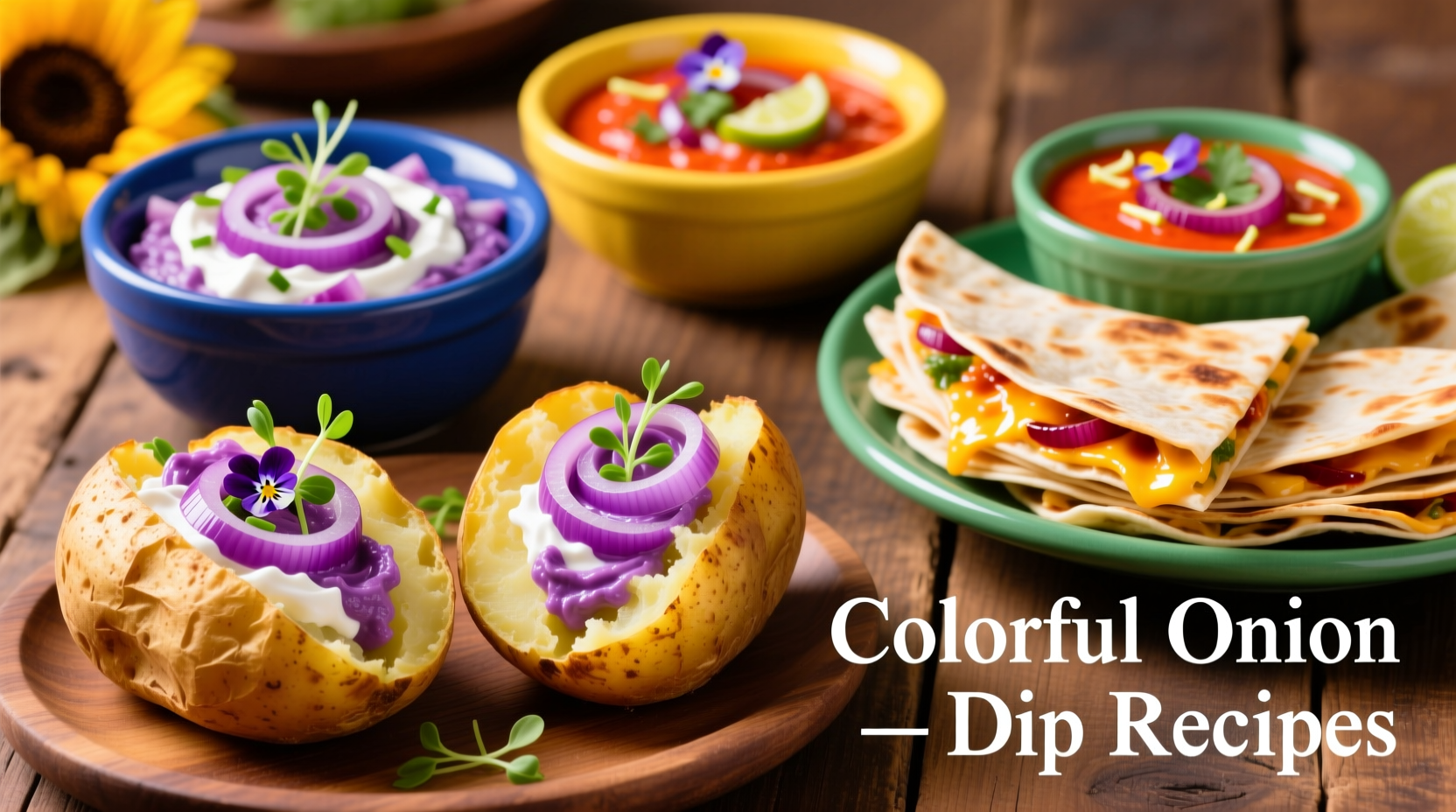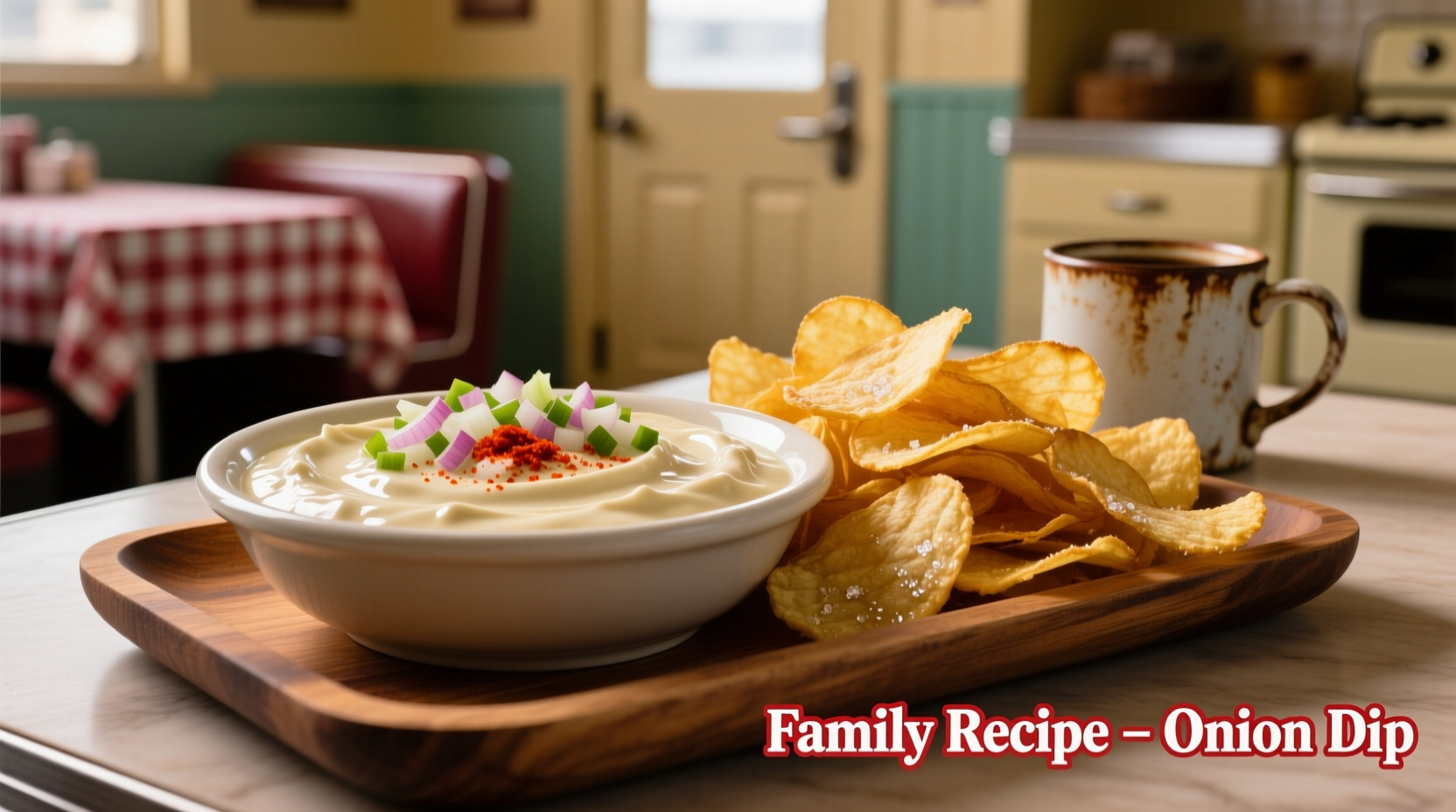Move beyond the chip bowl with these practical onion dip applications that home cooks have been perfecting for decades. As a professional chef who's worked everywhere from Michelin-starred kitchens to family diners, I've seen how this humble condiment solves real cooking problems: it adds instant flavor depth, saves preparation time, and rescues simple ingredients. Whether you're using store-bought or homemade dip, these techniques work because they leverage onion dip's natural emulsion of sour cream, mayonnaise, and caramelized onions - creating creamy textures and balanced savory notes that elevate everyday meals.
5-Minute Flavor Boosters: Instant Upgrades
When time's tight, onion dip becomes your secret weapon for immediate flavor enhancement. Unlike plain sour cream or mayo, its complex onion notes work magic with minimal effort.
1. Loaded Baked Potato Transformer
Slit a microwaved potato lengthwise, fluff with a fork, then mix in 2 tablespoons onion dip per potato. Return to oven for 5 minutes until edges crisp. The dip's acidity cuts through starchiness while its oil content creates that perfect golden crust.
2. Instant Salad Dressing Base
Whisk 1 part onion dip with 2 parts buttermilk for a creamy ranch alternative. Add lemon juice to taste. This works because the dip already contains emulsified fats and seasonings - you're essentially deconstructing a finished dressing.
| Onion Dip Application | Time Saved | Flavor Benefit | Best Dip Type |
|---|---|---|---|
| Marinade for chicken | 30+ minutes | Tenderizes while adding savory depth | Homemade with extra garlic |
| Soup swirl | 15 minutes | Creates instant richness | Thick, store-bought |
| Vegetable dip alternative | 20 minutes | More complex than plain yogurt | Any variety |
20-Minute Complete Meals
These recipes demonstrate onion dip's evolution from snack to meal foundation. Food historians note that during post-war America's convenience food boom, home economists began repurposing canned and packaged items like onion soup mix - a practice that naturally extended to commercial dips as they gained popularity in the 1970s. Today's applications build on this tradition of resourceful cooking.
3. One-Pan Sausage Skillet
Sear 1 lb smoked sausage slices in cast-iron skillet. Add 1 diced onion and 2 cups frozen potatoes. Cook until potatoes brown, then stir in 1/2 cup onion dip and 1/4 cup water. Cover and simmer 10 minutes. The dip's emulsifiers prevent separation while its sugars promote caramelization.
4. Speedy Beef Quesadillas
Mix 1 lb cooked ground beef with 1/3 cup onion dip. Spread on tortillas with cheese, fold, and cook in dry skillet 3 minutes per side. The dip replaces traditional wet ingredients that would make tortillas soggy, creating perfectly crisp results every time.

Make-Ahead Entertaining Solutions
Professional caterers have relied on onion dip's stability for decades. Unlike fresh dairy sauces, properly stored dip maintains consistency for 3-4 days - making it ideal for prepared dishes. The USDA's Food Safety and Inspection Service confirms that commercial onion dips (pH 4.1-4.6) remain safe refrigerated for 7-10 days, while homemade versions last 5-7 days when stored below 40°F.
5. Party Meatball Glaze
Combine 1 cup onion dip with 1/2 cup grape jelly in slow cooker. Add 2 lbs cooked meatballs and heat on low 1 hour. The dip's acidity balances the jelly's sweetness while its thickness creates perfect coating consistency.
6. Make-Ahead Casserole Base
Mix 1 cup dip with 2 cups cooked pasta, 1 cup shredded cheese, and veggies. Refrigerate assembled casserole up to 24 hours before baking. The dip's emulsion prevents ingredient separation during storage - a trick professional kitchens use for consistent results.
Pro Tips for Perfect Results
Understanding onion dip's composition prevents common mistakes. Most commercial varieties contain 60-70% fat (from mayo and sour cream), which means:
- Don't boil - High heat causes separation; gentle simmering maintains emulsion
- Thin properly - Use broth or milk, not water, which breaks the fat structure
- Boost flavor - Add 1 tsp Worcestershire sauce to store-bought dip for restaurant-quality depth
For homemade dip enthusiasts, extending shelf life while maintaining quality requires proper acid balance. According to the National Center for Home Food Preservation, adding 1 tablespoon vinegar per cup increases acidity safely without altering flavor significantly.
Troubleshooting Common Issues
When recipes go wrong, it's usually due to dip composition rather than technique:
- Separation during cooking - Caused by excessive heat; solution: remove from direct heat and whisk in 1 tsp cornstarch slurry
- Overpowering onion taste - Balance with acid (lemon juice) or sweetness (1 tsp honey)
- Too thick for drizzling - Thin with buttermilk instead of water for better emulsion
Storage Guidelines That Work
Maximize freshness with these evidence-based methods:
- Store opened commercial dip in original container with plastic wrap pressed directly on surface
- Homemade dip lasts 5-7 days refrigerated (vs 3-4 days without proper storage)
- Freeze in ice cube trays then transfer to bags for portioned use later
Final Thoughts
Onion dip's versatility stems from its perfect balance of fat, acid, and umami - elements that form the foundation of great cooking. By understanding its composition rather than just following recipes, you'll develop the confidence to improvise with this pantry staple. Remember that the best applications enhance rather than mask the dip's natural qualities, using its strengths to solve real cooking challenges from time constraints to flavor balancing. These techniques work because they're grounded in food science principles that professional kitchens have utilized for generations.
Frequently Asked Questions
Can I use onion dip instead of sour cream in recipes?
Yes, but with adjustments. Onion dip contains more fat and seasonings than plain sour cream. For every 1 cup sour cream called for, use 3/4 cup onion dip plus 1/4 cup milk to maintain proper consistency. This works well in baked potatoes, casseroles, and as a taco topping where the onion flavor complements other ingredients.
How do I prevent onion dip from separating when cooking?
To prevent separation, never bring onion dip to a boil. Keep heat at medium-low and stir constantly. If using in soups or sauces, temper the dip by whisking in 2-3 tablespoons of the hot liquid first, then gradually add the mixture back to the pot. Adding 1 teaspoon of cornstarch mixed with cold water before heating also stabilizes the emulsion.
What's the best way to enhance store-bought onion dip for recipes?
Boost store-bought dip by stirring in 1 teaspoon Worcestershire sauce, 1/4 teaspoon smoked paprika, and a squeeze of fresh lemon juice. For meat dishes, add 1 minced garlic clove. These additions compensate for the preservatives in commercial dips while enhancing the natural flavors without requiring additional cooking time.
Can I freeze dishes made with onion dip?
Yes, but with limitations. Dishes where onion dip is a minor ingredient (like casseroles with less than 1 cup dip) freeze well for up to 3 months. However, dip-heavy recipes like meatball glazes don't freeze successfully because the emulsion breaks during thawing. For best results, freeze dip-based dishes before the final cooking stage, then add fresh dip after reheating.
How can I make onion dip recipes healthier without sacrificing flavor?
Create lighter versions by replacing half the dip with Greek yogurt. The yogurt's acidity mimics the dip's tang while adding protein. For significant reductions, use 1/3 dip and 2/3 blended cottage cheese with a splash of pickle juice for tang. These substitutions maintain creaminess while cutting fat content by 30-50% without noticeable flavor loss in cooked applications.











 浙公网安备
33010002000092号
浙公网安备
33010002000092号 浙B2-20120091-4
浙B2-20120091-4